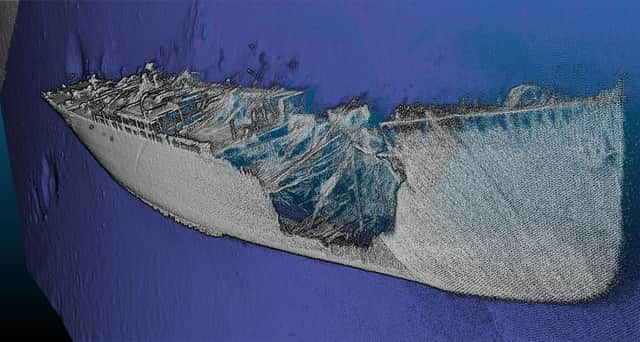World War One shipwreck at Blackhead revealed


The team led by Dr Ruth Plets, School of Environmental Sciences at Ulster University, captured data about the SS Chirripo, which sank in 1917 after striking a mine.
The researchers, employing the new multi-beam system (EM2040) on board the Marine Institute’s Celtic Voyager, also surveyed the SS Polwell, which was torpedoed in 1918 northeast of Lambay Island and the RMS Leinster, which sank in 1918 after being torpedoed off Howth Head when over 500 people lost their lives.
Advertisement
Hide AdAdvertisement
Hide Ad“We were able to capture the most detailed images of the entirety of the wrecks ever. Some of the wrecks, which are too deep to be dived on, have not been seen in 100 years. So this is the first time we can examine what has happened to them, during sinking and in the intervening 100 years, and try to predict their future preservation state,” explained Dr Plets.
“We moved away from traditional survey strategies by slowing the vessel right down to allow us to get many more data points over the wreck, with millions of sounding per wreck. With the visibility conditions in the Irish Sea, no diver or underwater camera could ever get such a great overview of these wrecks.”
The project is carried out to coincide with WWI centenary commemorations. The next step is to use the data collected to create 3D models which can be used for archaeological research, heritage management and dissemination of these otherwise inaccessible sites to the wider public.
“There is so much data, it will take us many months if not years, to work it all up. Some of the wrecks are in a very dynamic environment and we are planning to survey these vessels again next year to see if there is a change, especially after the winter storms. That will give the heritage managers a better idea if any intervention measures need to be taken to protect them,” said Dr Plets.
Advertisement
Hide AdAdvertisement
Hide Ad“These data could well signal a new era in the field of maritime archaeology. We hope it will inspire a new generation of marine scientists, archaeologists and historians to become involved. Above all, we want to make the general public, young and old, aware of the presence of such wrecks, often located only miles off their local beach.”
The research survey was supported by the Marine Institute through its Ship-Time Programme, funded under the Marine Research Programme by the Irish Government.
The diverse team included maritime archaeologists Rory McNeary, from the Northern Ireland Department of the Environment, and Kieran Westley, from the University of Southampton; geologists Rory Quinn and Ruth Plets, both Ulster University; biologists Annika Clements, from Agri-Food and Biosciences Institute, and Chris McGonigle, from Ulster University; Ulster University Marine Science student, Mekayla Dale; as well as hydrographer Fabio Sacchetti from the Marine Institute who works on Ireland’s national seabed mapping programme, INFOMAR, run jointly with the Geological Survey of Ireland. They blogged about the seven-day survey on http://scientistsatsea.blogspot.ie